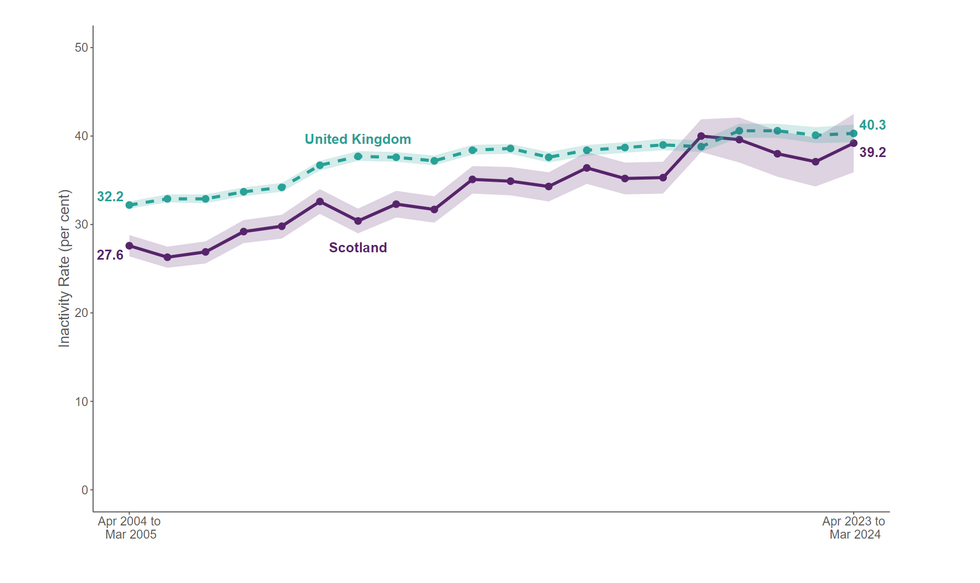New figures show over a fifth of working-age adults in the UK are deemed not to be actively looking for work.
The UK’s economic inactivity rate between April and June 2024 was 22.2 per cent, according to figures from the Office for National Statistics.
People not in the labour force, also known as economically inactive, are not in employment but do not meet the definition of unemployment because they are not actively seeking work.
The main groups who are economically inactive include groups of students, people looking after family and home, long-term sick and disabled, temporary sick and disabled, retired people and discouraged workers.
This chart shows breakdowns of changes in UK employment, unemployment, and economic inactivity
Labour Force Survey from the Office for National Statistics
Figures released on Tuesday show the four areas in England with higher than average rates of inactivity include the North East, North West, Yorkshire and The Humber and the West Midlands.
The highest rate of inactivity is in the North East (27.4%) which also has higher-than-average unemployment rates (4.6%) and lower-than-average employment rates (69%).
The largest change in the employment rate was in the North East, down 4.8 percentage points compared with estimates a year ago, however, the region also had the largest increase in economic inactivity.
Yorkshire and The Humber had the second highest inactivity rate at 25.0 per cent for those aged 16 to 64 years.
However, the area has lower than average unemployment rates (3.5%) compared to the national average of 4.2, but slightly lower than average employment rates (72.4%).
In the North West economic inactivity sits at 23.6 per cent and in the West Midlands at 23.5 per cent.
When separated by country, Wales has the highest inactivity rate of all UK nations and regions at 28.3 per cent.
This has risen 3.7 percentage points compared with a year ago.
According to recent estimates, a third of those economically inactive were long-term sick.
Welsh Conservatives said it was “incredibly disappointing” to see Welsh economic inactivity “remain stubbornly high”.
In Northern Ireland, the inactivity rate also remains high at 27.1 per cent, which is a decrease of 0.7 per cent over the year.
Economic inactivity rate estimates for persons aged 16 to 24, Scotland and the United Kingdom, April 2004 to March 2005 through to April 2023 to March 2024
The rate of economic inactivity for people aged 16 to 24 in Scotland was lower than the rate for the United Kingdom
Annual Population Survey, April to March datasets, ONS
LATEST FROM MEMBERSHIP:
However, Northern Ireland’s unemployment rate is the lowest in the UK sitting at 1.9 per cent.
Scotland also sits just higher than the national average at 23.1 per cent.
Nevertheless, the rate of economic inactivity for people aged 16 to 24 in Scotland was lower than the rate for the United Kingdom from April 2023 to March 2024.
According to the Scottish Government, the economic activity rate for young people in Scotland was 39.2 per cent compared to the UK as a whole at 40.3 per cent.
In England, the overall inactivity rate was the only country in the UK with a lower-than-average rate at 21.6 per cent.
The region with the lowest economic inactivity rate was in the South West (18.5%), while London saw the largest decrease.
Hannah Slaughter, a senior economist with the Resolution Foundation think tank, said that the rise in people “who aren’t working and aren’t looking for work” was worrying.
Slaughter pointed to long-term health conditions especially mental health as a driving force behind this rise.
She said: “People in their early twenties are now more likely to be out of work due to sickness than people in their early forties, which is really worrying.”



